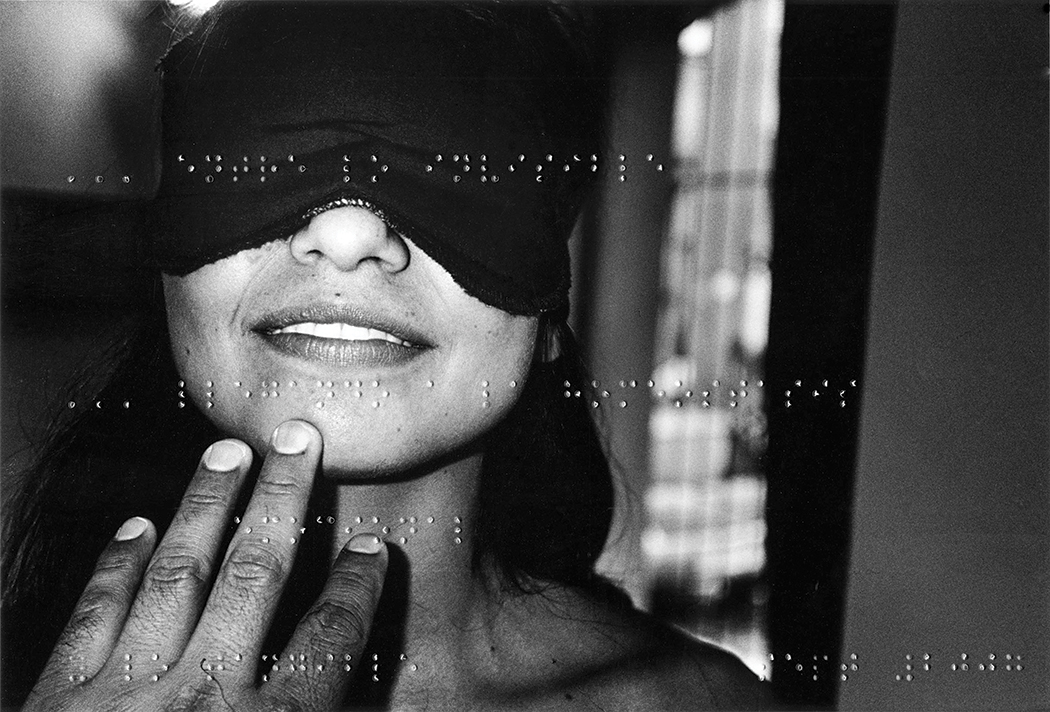By Isaiah Joseph | Published April 10, 2023
Kean’s Human Rights Institute introduces a remarkable exhibit showcasing the photographic works of blind artists from all around the world.
The exhibition’s theme of blindness and photography is a fascinating and innovative idea. The idea of artists who are visually impaired creating photographs opens up a whole new perspective on the relationship between the photographer and the image.

The absence of sight adds an element of mystery to the process of creating a photograph, as the artist must rely on their other senses to capture the essence of their subject.
It would be interesting to explore how the artists approached the process of making a photograph. Did they use touch or sound to compose their images, or did they rely on memory and imagination to create their works? How did they choose their subjects and what emotions did they hope to convey through their photographs?
Each shot reveals and tells a beautiful story but at the same time, the unique visual aesthetics of what each artist is trying to portray makes you ask yourself, “what do they see that I don’t?”
Many images tend to stand out in the gallery. Still, an image by the Mexican photographer Gerardo Nigenda stood out to me, titled in Spanish “Entre lo invisible y lo tangible, llegando a la homeostasis emocional,” which translates to “Reaching Emotional Equilibrium Between the Invisible and the Tangible.”
When I look at the image closely a striking feature is seen overlying the top of the black-and-white filter. Small poking dots scattered in a specific pattern throughout the image, and immediately I knew it was braille.
Braille is a tactile writing system that is used by people who are blind or visually impaired to read and write. It uses a series of raised dots arranged in patterns to represent letters, numbers, and punctuation marks.
By feeling the dots with their fingers, people who are blind or visually impaired can read braille characters and words.
I found this photograph very interesting because Nigenda uses this technique for individuals who can’t visually see the image, instead as they slowly rub their fingers across the photo, they can try to interpret the meaning from their perspectives.
As a result of that, I began to walk eagerly to view more of the captivating images. I tend to take my time to inspect and digest the context of each photograph. From dark exposure to blurred imagery and manipulation of certain elements to their will. These photographs have ceased to amaze me.
American artist Pete Eckert does exactly that. Eckert believes his disability is an advantage, which caught my eye. He has discovered a way to express what he sees through light painting.
According to an interview from SFGATE.com, San Francisco’s portal to the Bay Area and California’s most important news and fascinating features. Eckert talks about the darkness of his photography reflects his life.
“I feel light so strongly that it allows me to see the bones in my skeleton as pulsating energy,” Eckert said. “At times I can sort of see sound. sometimes I can even see things from the back of my head.”

Eckert’s piece, “Electroman” is a visually striking and thought-provoking piece of art that challenges our perception of reality and our relationship with technology.
The artwork consists of a black and white photograph of a man standing in a desolate landscape with his arms outstretched and connected to electrical wires.
The man’s face is obscured, and his body is contorted in a way that suggests both pain and ecstasy. The image is haunting and surreal, with a strong sense of isolation and disconnection.
Eckert’s use of black and white photography adds to the haunting and dreamlike quality of the piece, emphasizing the stark contrast between the man and the desolate landscape.
The lack of color also suggests a sense of timelessness and universality, making the image feel both ancient and modern.
Gerald Davis, Junior, a business management student, and employee of the Human Rights Institute sits and inspects the exhibit thoroughly throughout his daily shift.
Davis mentioned that his favorite piece was Electroman by Pete Eckert and the techniques he used for his work were strangely unique.
“The artist manipulated light as he claims he is able to feel it around him and see it through people.” Davis said, “I find it interesting that he was able to create something so profound as he uses his disability as an advantage.”
I recommend this exhibit to many people, not because of the beauty it shows but because it challenges traditional notions of what it means to be a photographer and highlights the unique perspective that blindness can bring to the creative process
Overall, the exhibition seems like a thought-provoking and eye-opening experience. It is an excellent opportunity to explore the relationship between art and disability and to celebrate the achievements of these talented artists.

You must be logged in to post a comment.